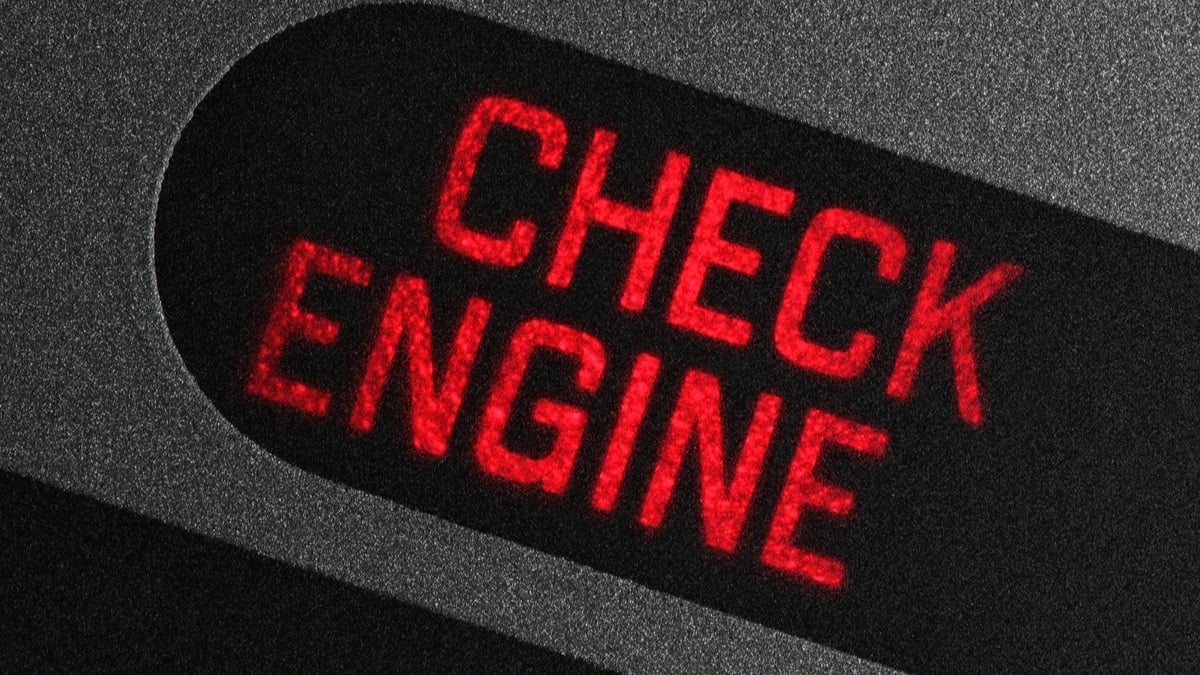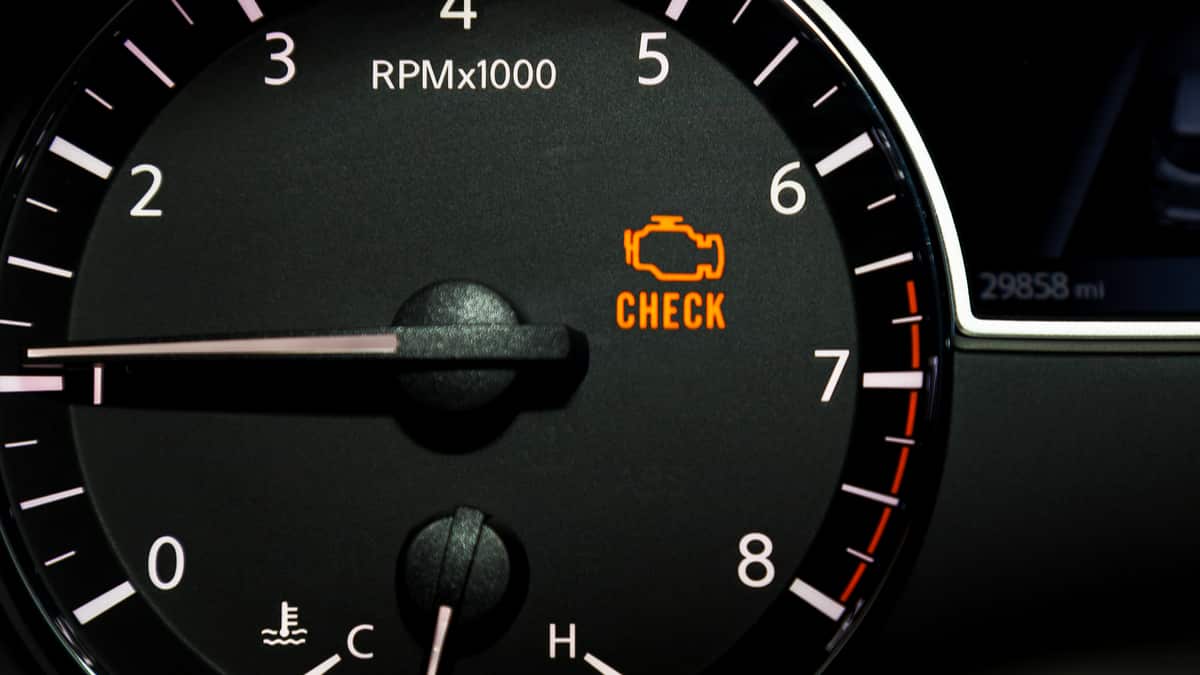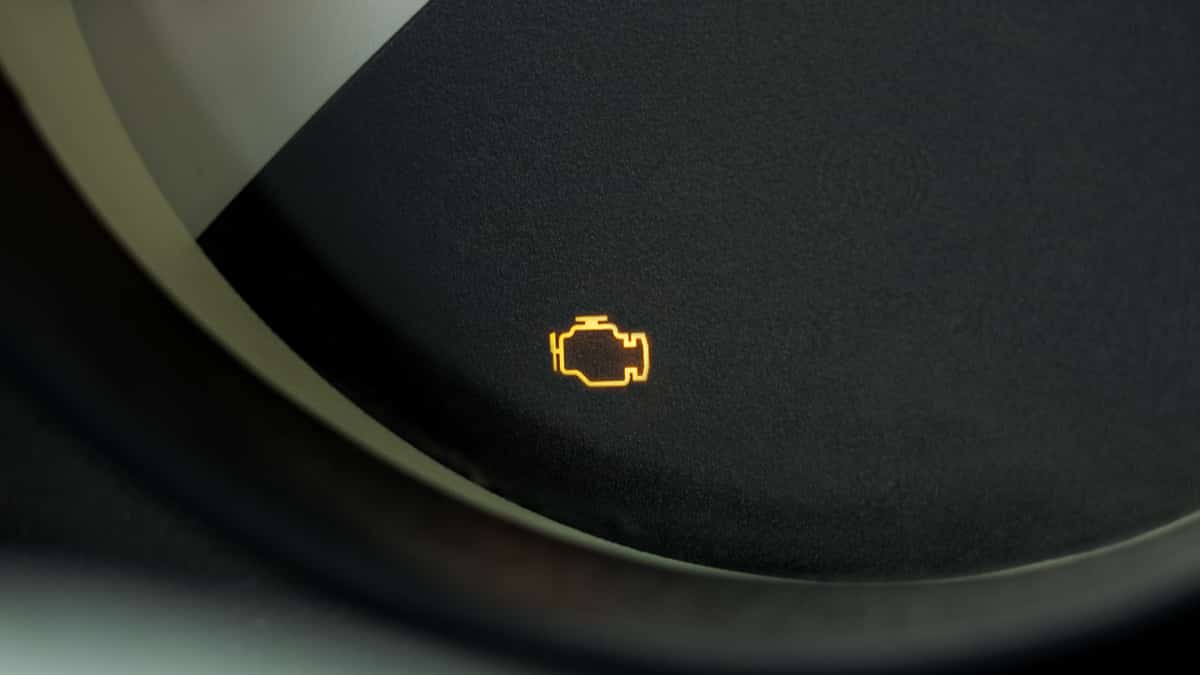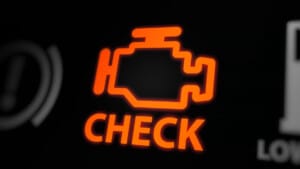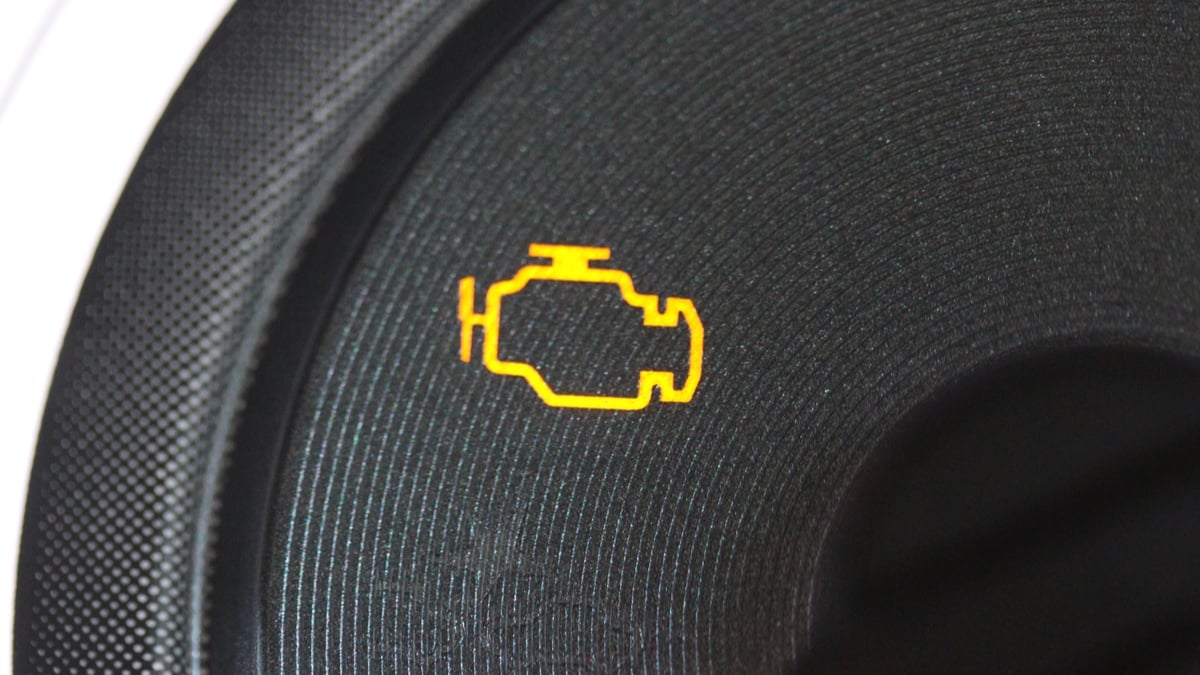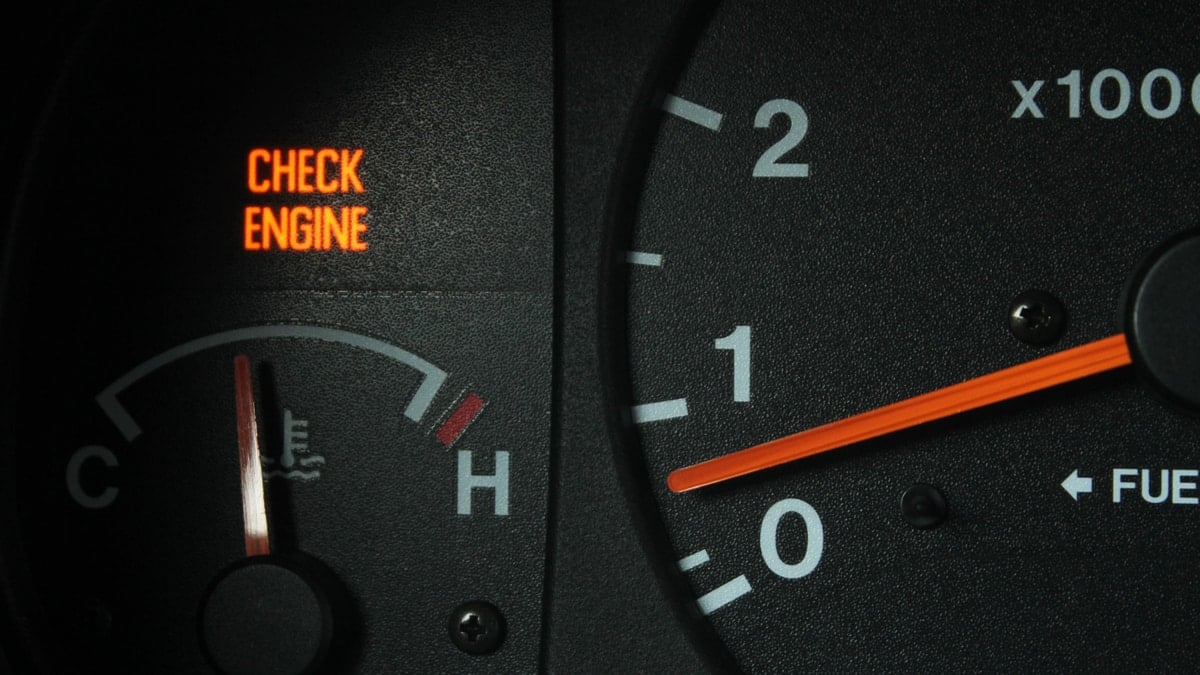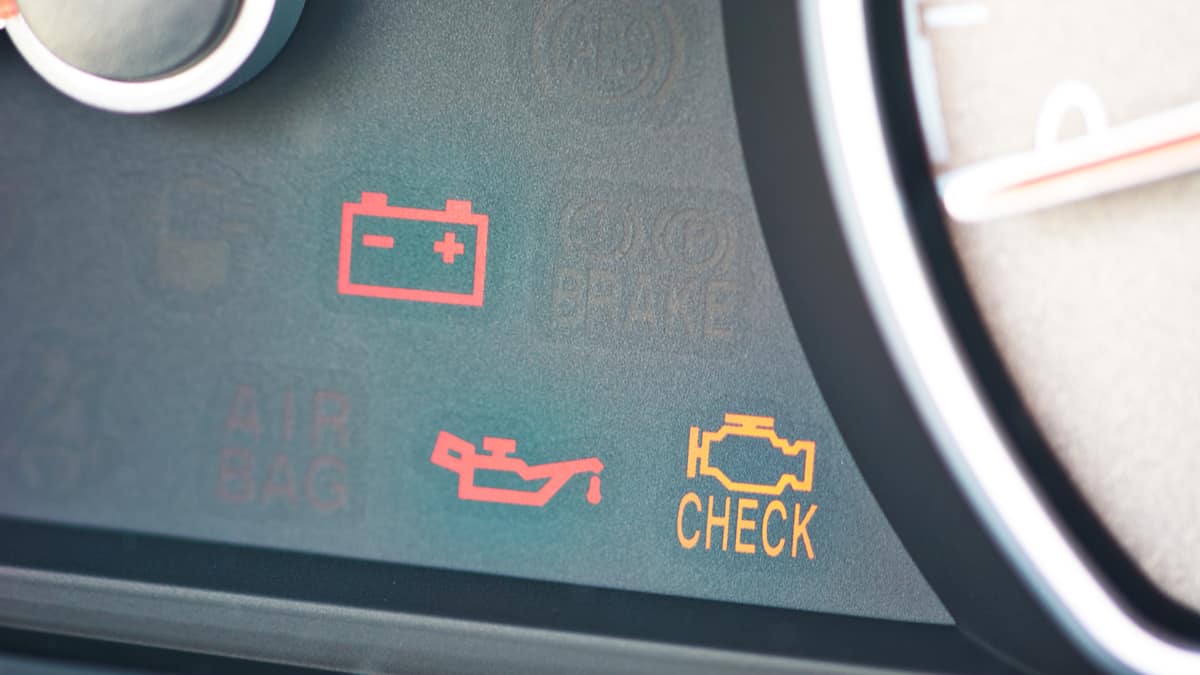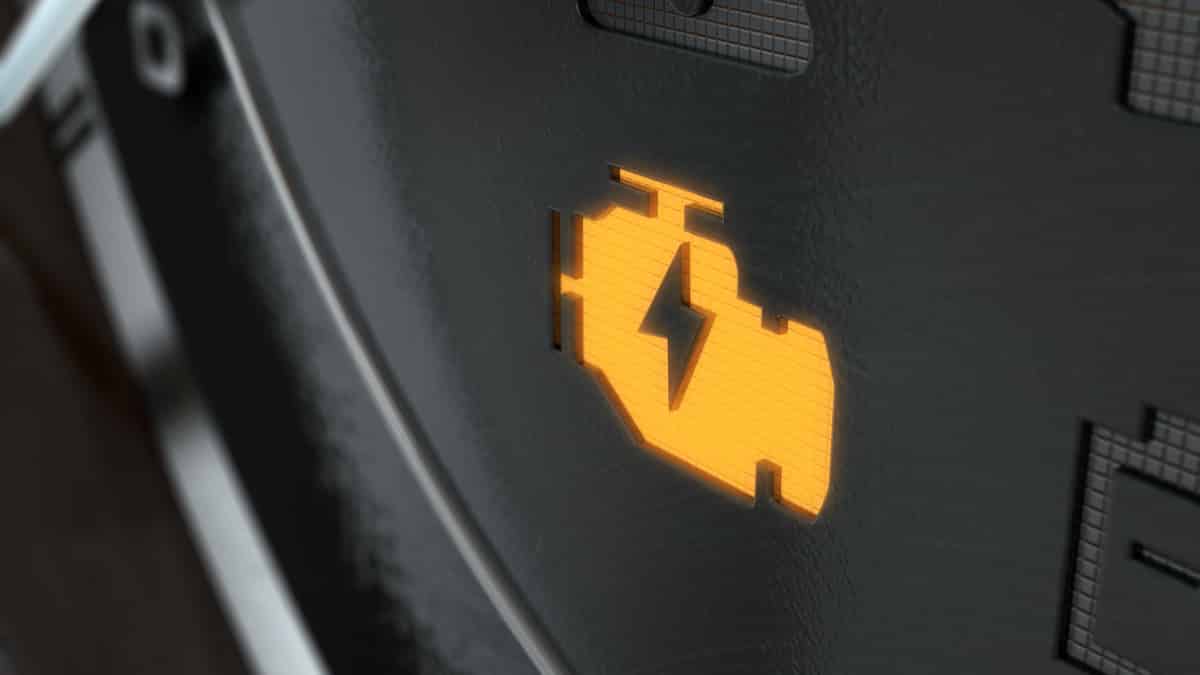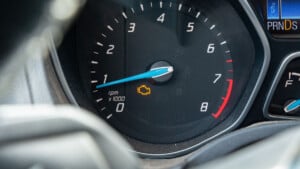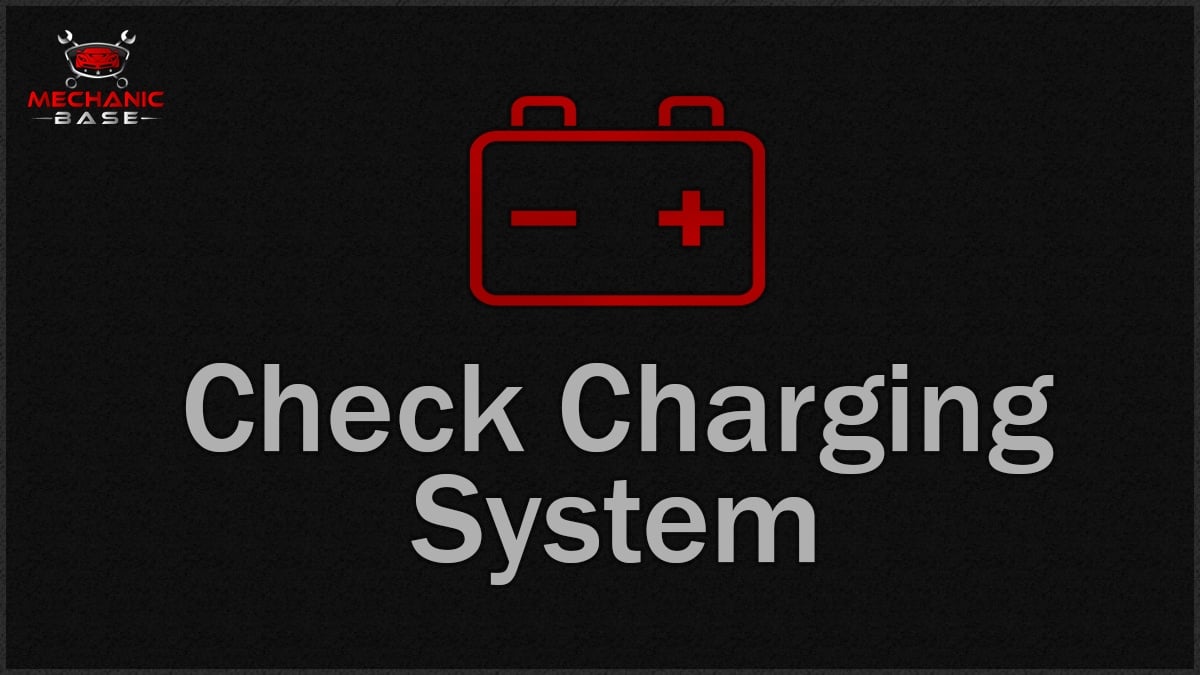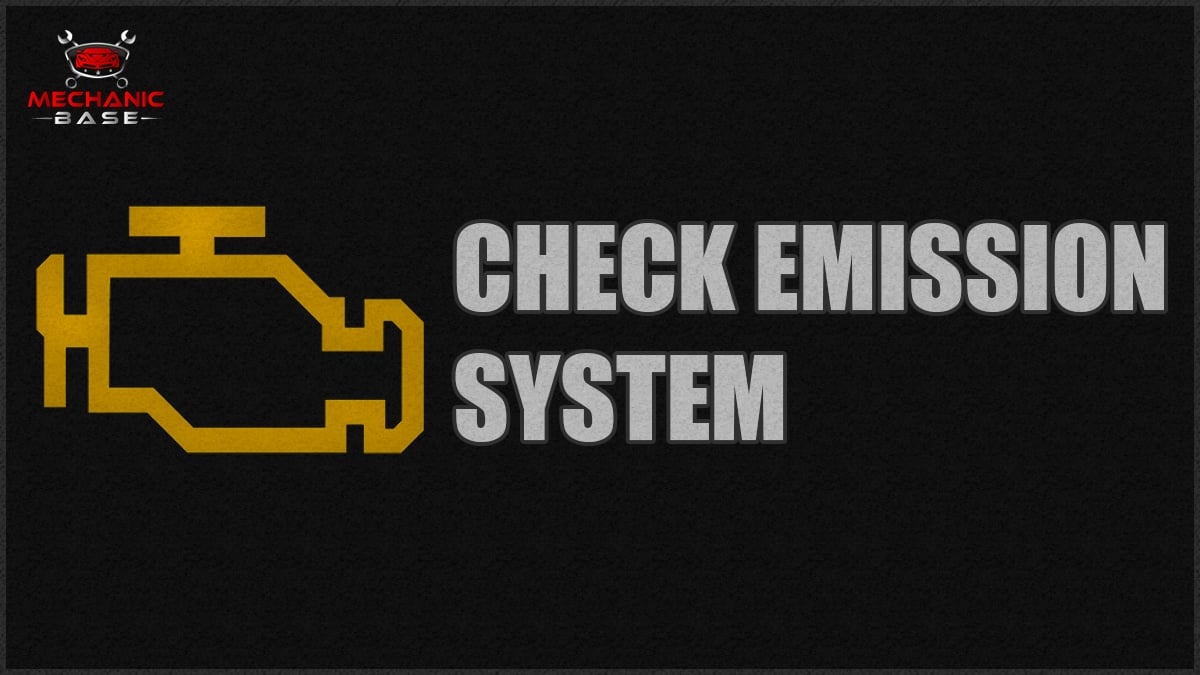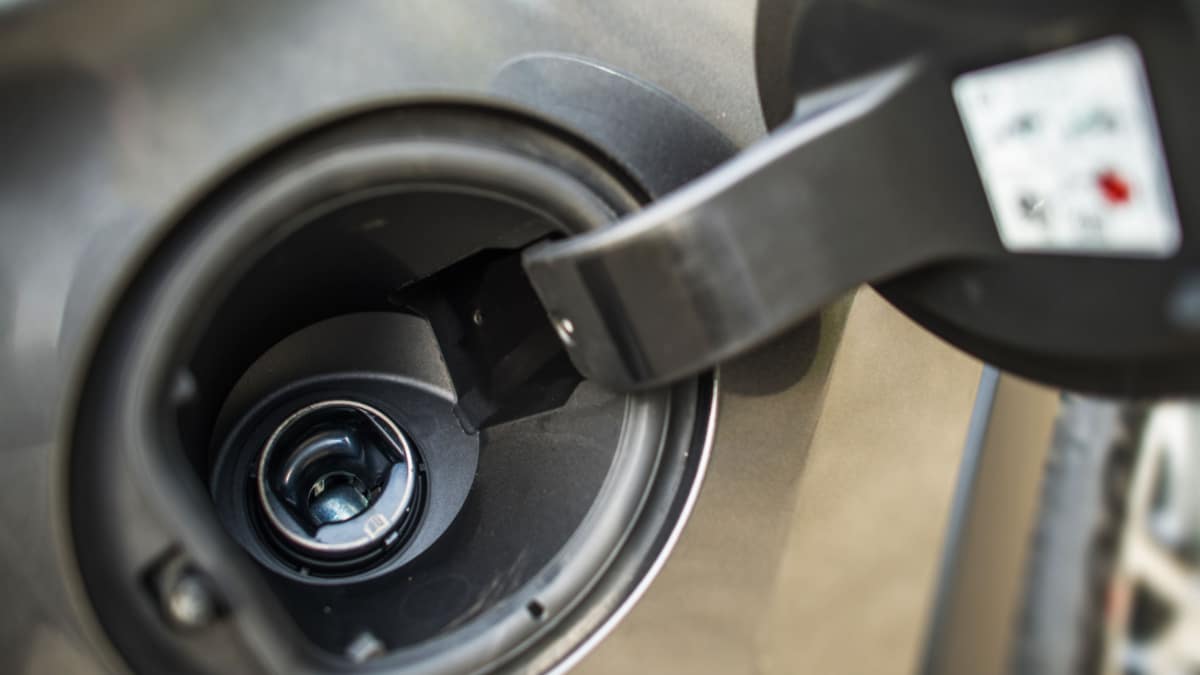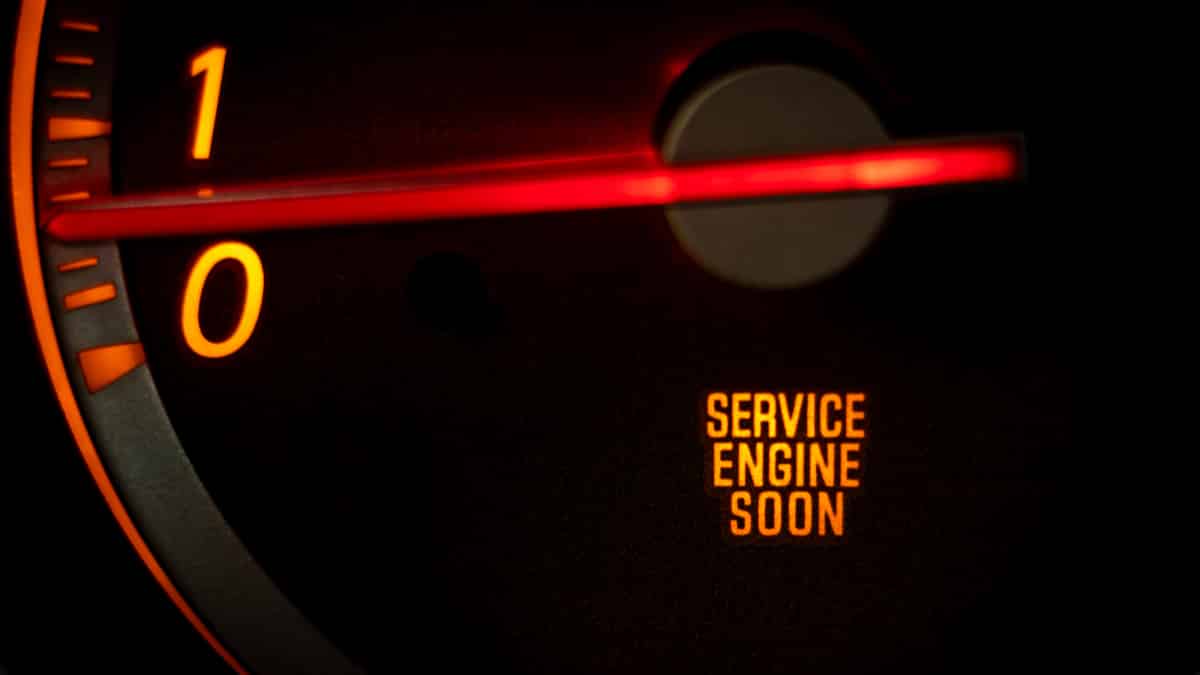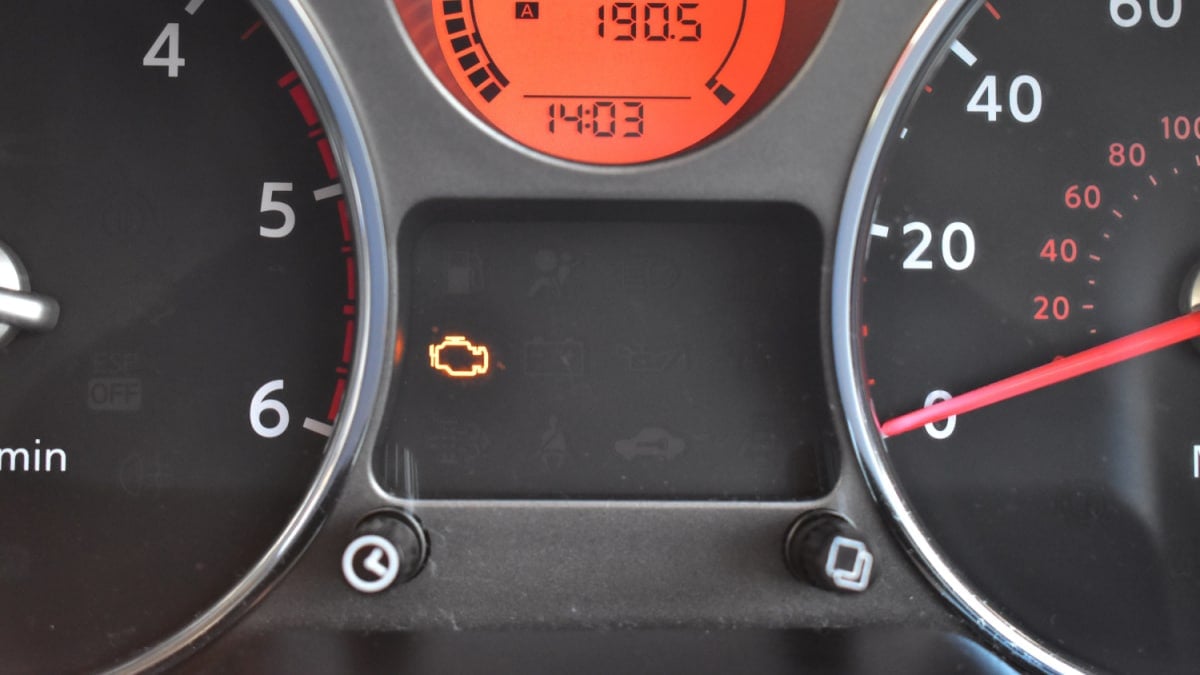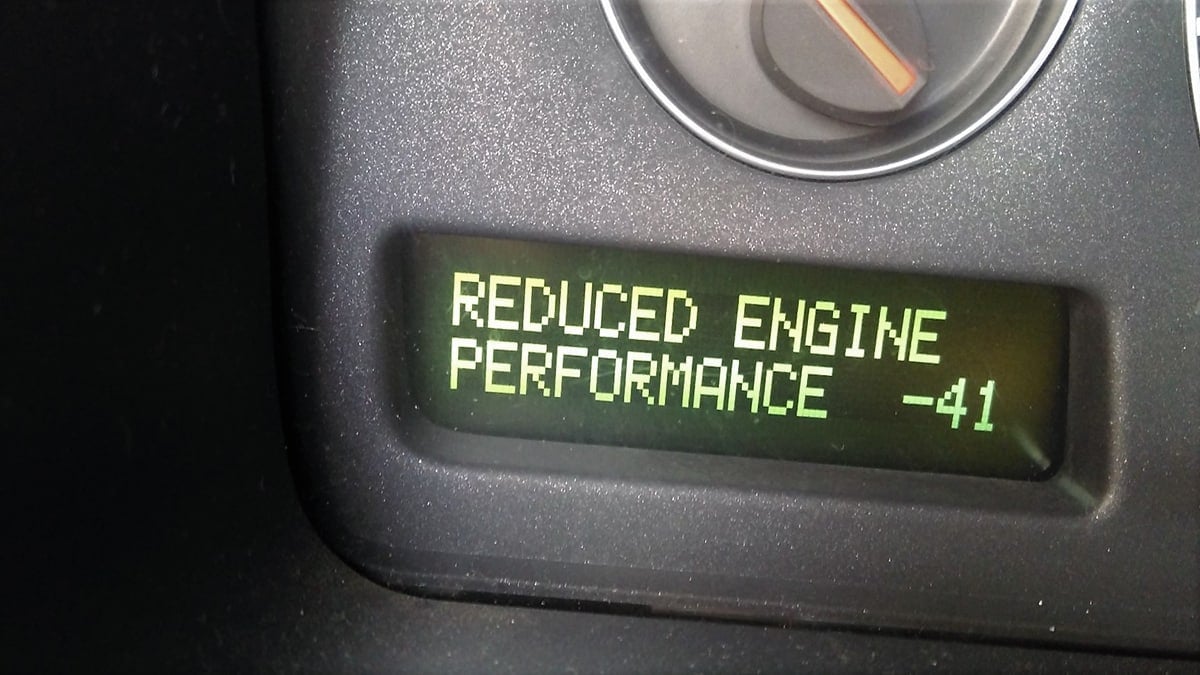The Check Engine Light causes alarm every time it comes on. It’s meant to create a level of panic, so you know there’s something wrong with the car. But is this warning light always serious, or are there times when you can put off having it fixed?
In this guide, I help you understand the meaning behind this Malfunction Indicator Light (MIL). I also discuss the differences between the solid and flashing light, and I list the top causes for the warning. Finally, there are some tips given on how to fix it, and we answer your biggest questions.
What Does The Check Engine Light Mean?
The Check Engine Light indicates that the vehicle’s computer has recognized a fault that needs to be repaired. Issues can range from anything minor, such as a loose gas cap, to problems that are more severe, such as a failing sensor.
The Check Engine Light looks different in different car models. It can come in different colors, like orange, yellow, or red. It also can be a picture of an engine, or have words, such as “Check Engine,” “Service Engine Soon,” or “Check Powertrain.”
Since the 1980s, vehicles have been using an onboard diagnostics system. These systems are responsible for controlling and monitoring performance while regulating engine speed, ignition timing, and the air-fuel mixture. Today, everything is computerized, even to the point of dictating when the automatic transmission shifts.
Solid vs. Flashing Check Engine Light
When the Check Engine Light comes on the dashboard solid (meaning it isn’t blinking), it means there is something that needs to be looked at as soon as possible. In most cases, you would be fine to continue driving home or to the repair shop. However, you don’t want to put off running the codes to see what’s wrong.
On the other hand, if the Check Engine Light starts flashing, there’s a serious issue. You should immediately pull over in a safe location to troubleshoot the car. Do not drive further, or you could cause permanent damage to the engine.
Common Causes Of A Check Engine Light
Some Check Engine Light problems are simple, such as a leaking or loose gas cap. In other cases, it could be due to a bad oxygen sensor, a dirty MAF sensor, intake vacuum leaks, a failing catalytic converter, fouled spark plugs, bad ignition coils, a failing battery or a bad alternator.
Let’s evaluate these possibilities.
1. Loose or Leaking Gas Cap
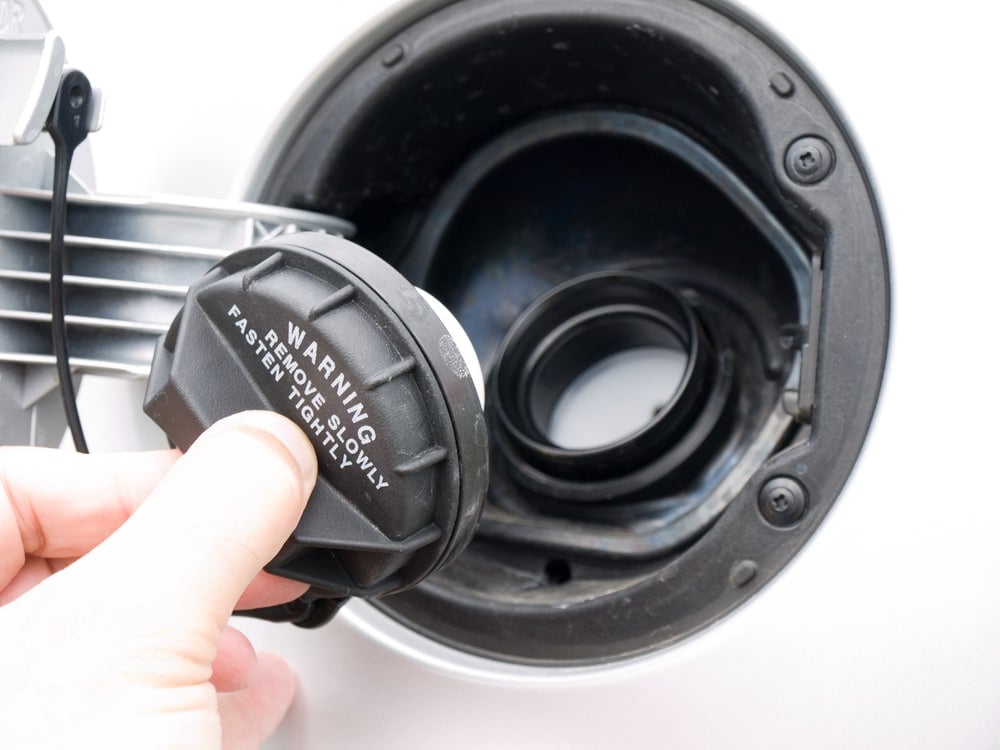
It may seem strange that a gas cap can cause the Check Engine Light to come on, but it happens often. If the gas cap isn’t sealed completely, it can set a code because of an EVAP leak. This problem occurs if the cap is cracked or you forget to put it on.
Additionally, the code can be set when you fill up with the engine running. Because the computer sees the system open, a code is set. It’s always best to turn off the engine before you open the gas cap. It’s also recommended at the gas pump for your safety.
2. Bad Oxygen Sensor
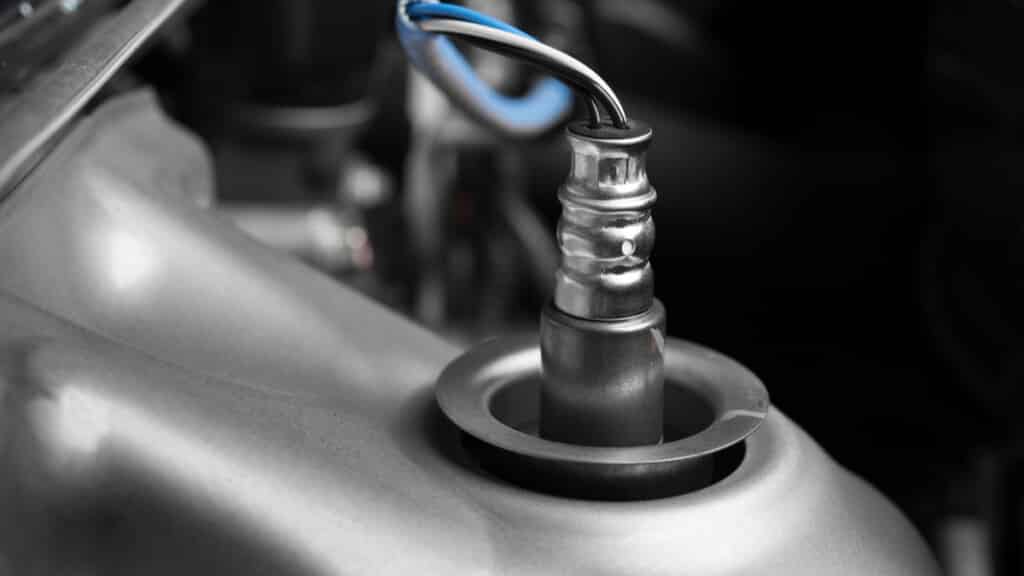
The oxygen sensor measures the air coming out of the engine to determine how much fuel should be injected. When an oxygen sensor fails, you are going to see the Check Engine Light.
Additionally, there will be a decrease in fuel economy as the air-fuel ratio is imbalanced. It can also create decreased performance. If you don’t replace the oxygen sensor and the car runs rich, you can cause other damage to components such as the spark plugs and catalytic converter.
3. Dirty or Bad MAF Sensor
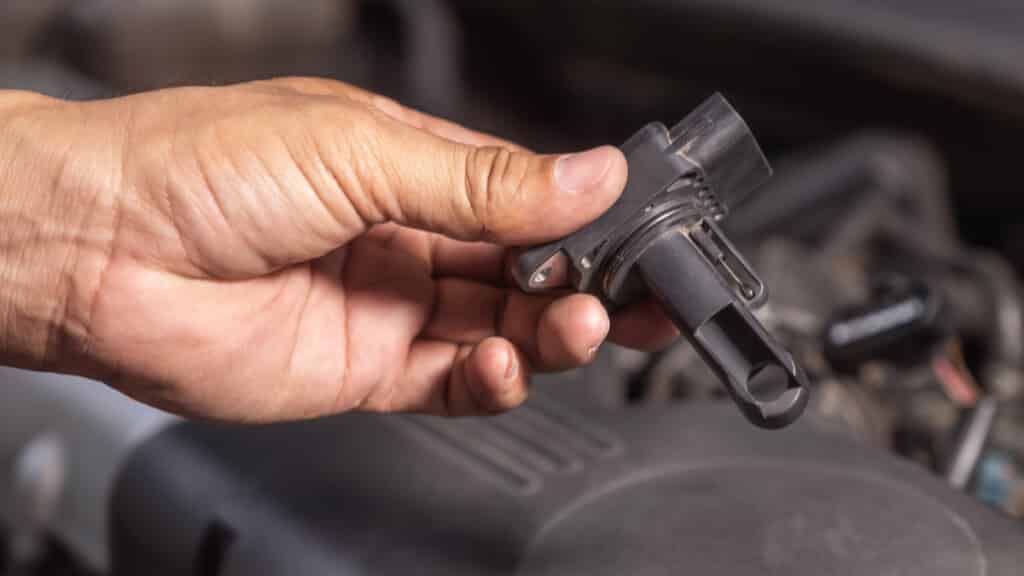
The mass air flow (MAF) sensor makes up part of the fuel injection system. This sensor measures how much air is entering the engine. It’s also used to determine how much fuel needs to be injected.
For that reason, a failing MAF sensor is going to create a lot of the same symptoms as a bad oxygen sensor. There’s a chance that the sensor is just dirty or contaminated and it can be cleaned up. If so, you save some money on a replacement.
4. Intake Vacuum Leaks
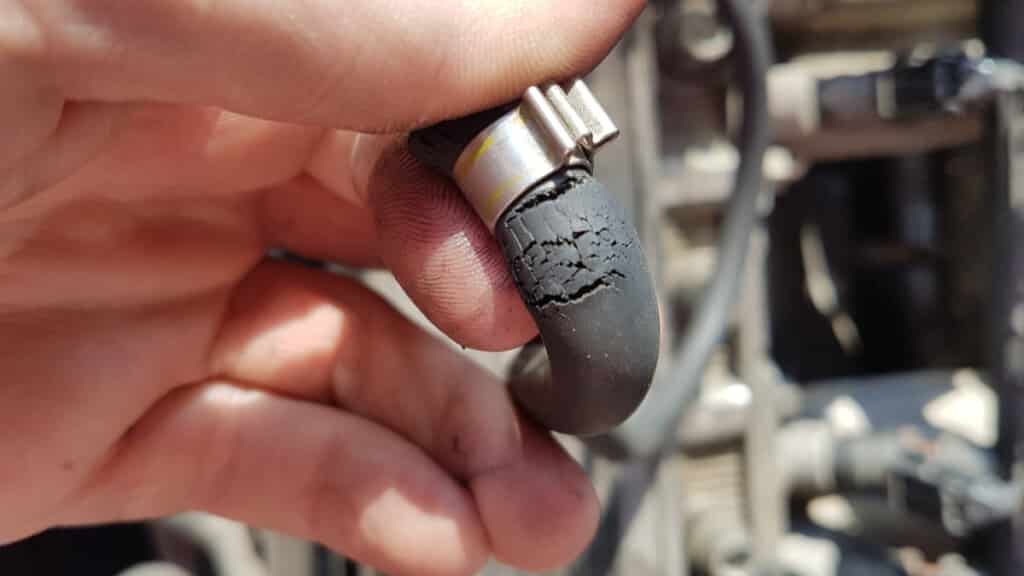
An intake vacuum leak can occur because of several issues. You may have a cracked intake manifold or a faulty manifold gasket.
With a leak, you may hear strange engine sounds, almost like a whistling or hissing. Along with black exhaust smoke, you may deal with backfiring and misfiring too.
5. Failing Catalytic Converter
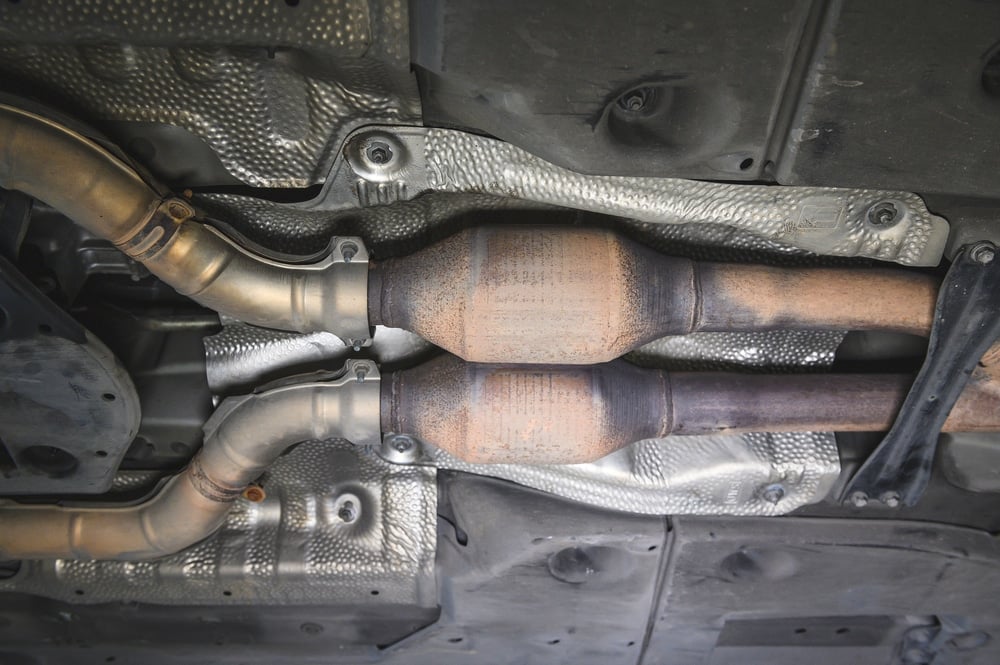
The catalytic converter is designed to reduce harmful emissions in the atmosphere. Within the converter, catalysts exist to change the composition of the exhaust gas before it hits the air.
When the catalytic converter fails, the Check Engine Light will come on. There may not be any performance issues with a struggling converter, but your vehicle won’t pass an emissions test.
6. Bad Spark Plugs or Ignition Coils
Both the spark plugs and ignition coils are necessary to ignite the air-fuel mixture in the cylinders. Many automakers recommend changing the spark plugs as part of the maintenance schedule, so you can avoid failure.
With either one, you will notice many of the same systems as they fail. The engine may misfire, it will be sluggish to respond and fuel economy will drop.
7. Failing Battery or Alternator
The battery is needed to start the car engine. In relation, the alternator is responsible for charging the car battery while the engine is running.
If the voltage starts to drop, the Check Engine Light is going to come on. You may also get a battery warning light, but this often doesn’t provide a lot of warning before the battery dies.
Batteries often need to be replaced every five years, on average. On the other hand, you shouldn’t need a new alternator as frequently. Most alternators will last seven years or around 150,000 miles.
How To Fix A Check Engine Light
You don’t need to be a mechanic to turn the Check Engine Light off. If you have a compatible scanner and some basic knowledge, you can fix it yourself. Here are some tips to help you out.
1. Read Trouble Codes

With your compatible code scanner, you can read the DTCs to see what’s going on. Plug your scanner into the OBD-II port located under your steering wheel.
If there are a lot of codes present, you may prefer to clear them and restart the car. The light will come back on and set the most prevalent codes for you to research.
2. Research Trouble Code
Trouble codes often have a letter and series of numbers, such as P0100. These trouble codes can be the same across all manufacturers or specific to just one. Some of the trouble codes are going to provide a generic explanation, requiring you to do more research. In this case, you want to use our online trouble code library for more guidance.
If you have several trouble codes showing, you can piece them together to make up a clearer picture. For example, if two codes reveal something wrong with the oxygen sensor, you probably won’t need to do a lot of diagnostics to determine that a sensor is bad.
3. Repair The Issue
Once you know what’s wrong, you can repair it. Of course, fixing the gas cap is easy enough, but some of the other issues may be more complicated.
You can replace the sensor, perform a tune-up with new spark plugs or get a new catalytic converter. Once you get the problem fixed, it’s time to turn off that light.
4. Reset Codes And Test Drive
Now you are ready to plug the scanner back in and reset the codes. Take the car out for a test drive to see if the problem is fixed.
If the light stays off, you are good to go. Otherwise, you might need to move on to the next step.
5. Contact A Professional
If you’ve exhausted your options, it’s time to ask for help. Even as professional mechanics, we sometimes need more support.
Search your local area for a qualified mechanic. It’s also helpful to ask for recommendations from the people closest to you.
Is it OK to drive with the check engine light on?
You shouldn’t continue driving with a Check Engine Light. You need to diagnose the problem and have it repaired. Even if the problem is simple, you won’t know if something else fails while that light is on. However, if the Check Engine Light starts to blink, you know the problem is severe, so you should stop driving.
What does a solid check engine light mean?
The solid Check Engine Light can indicate any fault measured by the computer. It can be something as small as a loose gas cap to a failed catalytic converter. The only way to know for sure is to run the DTCs with your compatible code scanner. These trouble codes indicate the fault that the computer sees.
How do I know if my check engine light is serious?
If the Check Engine Light is serious enough to cause engine damage within seconds, the light should blink. However, there can also be severe issues indicated by a solid Check Engine Light. Therefore, you should take every malfunction light seriously and scan the computer with your OBD-II device.
Can a check engine light resolve itself?
The Check Engine Light doesn’t normally turn itself off. Once you make the necessary repairs, you want to use your code scanner to reset the system. After you drive for a few minutes, you’ll know that the problem is resolved because the Check Engine Light won’t come back on.
How much does it cost to get a check engine light fixed?
It depends on what caused the light to come on. For example, if you need a new gas tank cap, you may only spend $20. On the other hand, the light could indicate bigger problems, such as a failed catalytic converter. In this case, you could easily spend $900 to $2,000, depending on the type of car you drive.
The Check Engine Light invokes every feeling in drivers that it is supposed to. This light is telling you that something is wrong and you would be wise to pay attention. Even if the light isn’t flashing, you should get the car looked at as soon as you can. By fixing the problem promptly, you can avoid larger problems in the future.
For example, what may be a simple spark plug replacement can also turn into a failed catalytic converter because of neglect. Save yourself the money and take care of your vehicle, so it can give you more adventures.
Tags: sticky
Categories: Engine, Warning Lights
